Wild treasures of Australia’s national parks
From ancient rock art to little-known trails and beaches, our national parks are full of surprises.
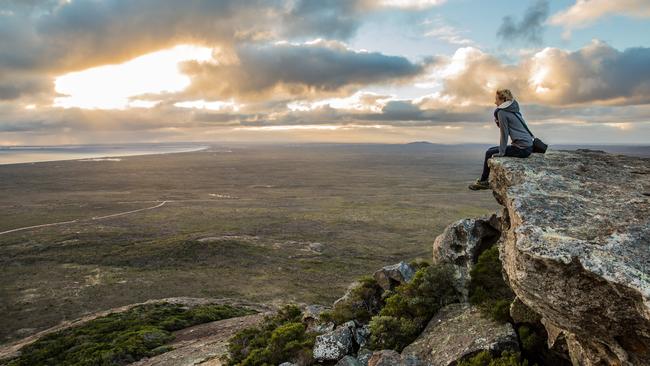
Diversity and detours abound in our national parks.
Frenchman Peak, Cape Le Grand National Park, WA
While famous for the friendly kangaroos on Lucky Bay’s white-sand beach, there’s much more to Cape Le Grand National Park, 630km southeast of Perth, for those eager to explore beyond its sapphire waters. Frenchman Peak rises 262m and although the trail is only 3km it takes about two hours to tackle a return trip. It’s a challenging walk, and the smooth granite is slippery in areas so jogging shoes or hiking boots are a must, but the summit affords spectacular views over the park to Recherche Archipelago. Back at ground level, take a break on the beach at Lucky Bay or head to Esperance, the closest township, 56km to the east.
Base camp: Esperance Island View Apartments; esperanceapartments.com.au.
Ngaro Cultural Site, Whitsunday Islands National Park, Queensland
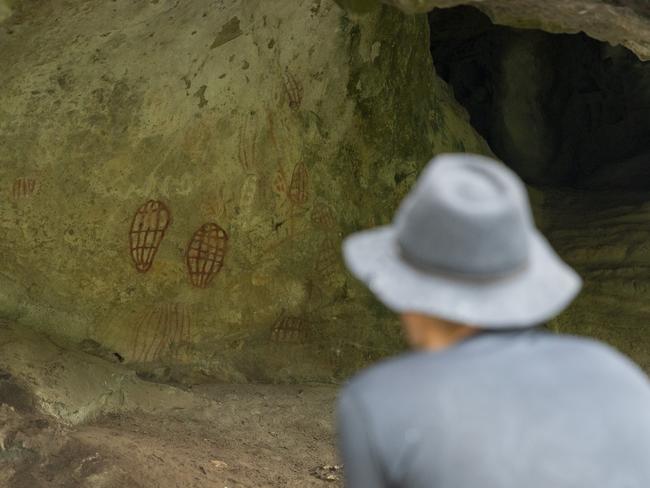
Best known for white beaches, palm-dotted isles and hideaway resorts, the Whitsunday Islands, off the state’s northeast coast and part of the Great Barrier Reef World Heritage Area, also feature notable Aboriginal rock art and middens. The protected anchorage of Nara Inlet, part of the Ngaro Sea Trail, is on the south of Hook Island and only accessible by boat, so tourists need to charter a yacht or join a marine tour from Airlie Beach. Once moored and ashore, follow the moderately easy 340m return walking trail to a viewing platform and cave, known as Ngaro Cultural Site. Paintings decorate the fragile rock walls and signage along the track educates visitors about local Indigenous history. Then it’s back to the national park waters for a swim, snorkel or kayak.
Base camp:Pinnacles Resort, Airlie Beach; pinnaclesresort.com.au.
Davidson Whaling Station Historic Site, Ben Boyd National Park, NSW

The port of Eden, about 550km south of Sydney on the Sapphire Coast, was the epicentre of Australia’s tragic whaling history. Regular visitors will know the main attractions of Ben Boyd National Park — Ben Boyd’s Tower and Green Cape Lighthouse — but Davidson Whaling Station Historic Site is also an important part of the story. The Davidson family were major whaling operators and it’s said that killer whales (orcas) helped crews hunt other whale species migrating past. The historic site, above a now-peaceful cove, was the family’s home and where the whales were brought ashore to be processed. The site is one of five stops on the self-drive Killer Whale Trail, mostly on sealed roads and including Twofold Bay. Whale-watch season is August to November.
Base camp: Green Cape Lightstation Keepers’ Cottages; nationalparks.nsw.gov.au.
Cougal Cascades, Springbrook National Park, Queensland
The well-known Gold Coast can still deliver a few surprises, such as Currumbin Rock Pools. What many visitors don’t realise is that if you exit Gold Coast Highway and follow the length of Currumbin Valley Road, it eventually leads to Cougal Cascades, a waterfall in Springbrook National Park. Follow the bitumen Cougal Cascades Track alongside Currumbin Creek past rockpools and small cascades. The path, about 1.6km return, is suitable for prams or wheelchairs. There are lovely rainforest views from a platform with sounds of resident whipbirds and kookaburras, and at the end of the trail stands a sawmill from the 1940s that’s worth checking out.
Base camp: Springbrook Lyrebird Retreat; lyrebirdspringbrook.com.
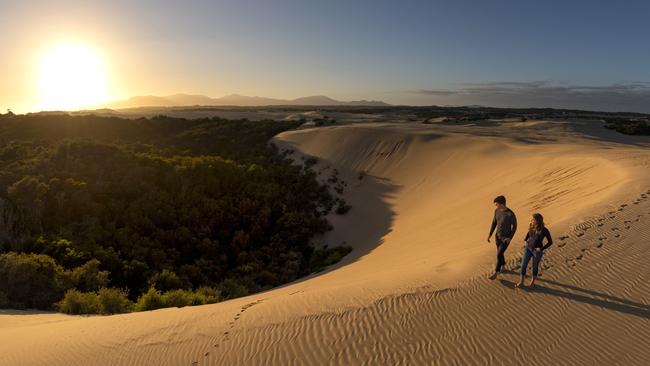
Big Drift, Wilsons Promontory National Park, Victoria
Wilsons “Prom”, 225km down from Melbourne, is the southernmost tip of mainland Australia and one of Victoria’s most notable tourist destinations so, if you’re a camper, avoid peak holiday season. Big Drift refers to sprawling inland sand dunes, a short walk from Stockyards Camp, near the park’s main entrance. For best photos, head out at sunrise or sunset to watch the dunes change colour in this ever-shifting environment. The beach can’t be accessed from Big Drift but after rainfall there are often pools large enough to swim in. It’s easy to get lost in the dune system, so visitors are warned not to venture too far from the walking trail.
Base camp: Wilsons Promontory Lightstation Cottages; parks.vic.gov.au.
Maguk Waterfall, Kakadu National Park, NT
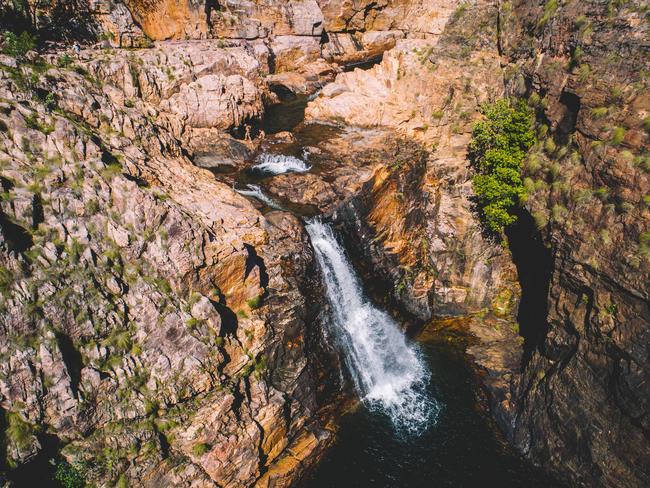
Yellow Water Billabong, Ubirr lookout and the waters of Jim Jim Falls during the NT’s tropical summer undoubtedly steal the lion’s share of attention in World Heritage-listed Kakadu. But anyone who loves hiking should also venture to Maguk at Barramundi Gorge. You will need a 4WD to reach the trail-head of a 2km return walk through monsoon forest and along a sandy creek. The trail is gentle, with only a little rock-hopping, and there’s a small waterfall-fed pool at its end. Maguk can feel busy (for its size) around midday, so start out straight after breakfast to share the experience with fewer travellers, and choose the dry months (May-October) to avoid potential road closures due to heavy seasonal rains.
Base camp: Kakadu Lodge Jabiru;
kakadulodgejabiru.com.
Peron Homestead Precinct, Francois Peron National Park, WA
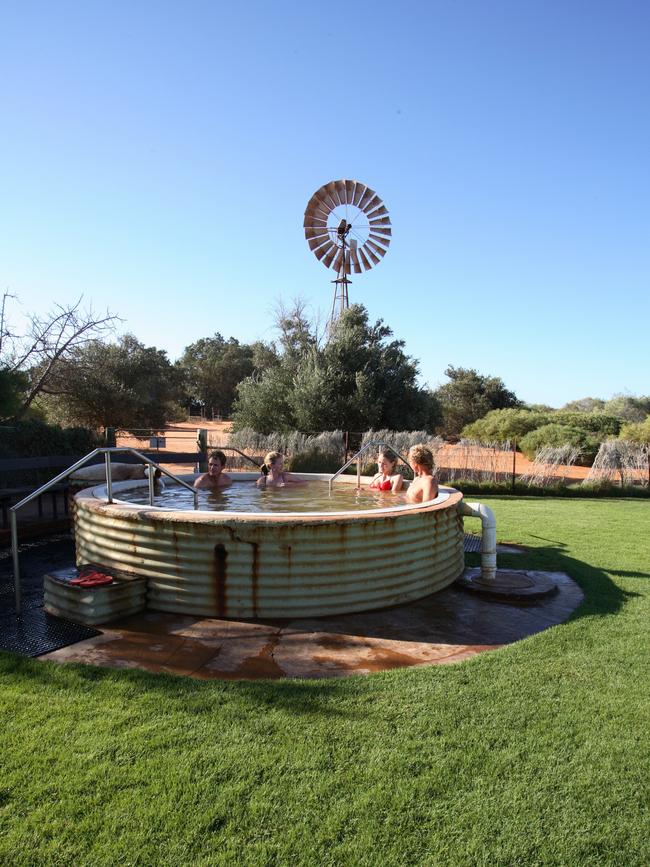
On the Coral Coast, not far from Monkey Mia, which has been given a multimillion-dollar revamp over the past two years, stretches Francois Peron National Park in the Shark Bay World Heritage Area. On its edge is Peron Homestead Precinct, an early 20th-century former pastoral station with a much talked-about artesian hot tub. Don’t expect a sophisticated mineral springs experience, but it’s fun and different. Before soaking in the hot water, allow about 30 minutes to set off on the self-guided Pepper Trail that leads to the homestead’s old shearing shed, workers’ quarters and stockyards.
Base camp: Heritage Resort Shark Bay, Denham; heritageresortsharkbay.com.au.

Dolphin Beach, Innes National Park, SA
This coastal park, on the southwest tip of Yorke Peninsula, about 300km west of Adelaide, feels like a true discovery and offers bushwalkers options from flat trails to four-hour treks. Rugged surf beaches such as Pondalowie Bay, quiet coves, swaths of coastal vegetation, plenty of fishing opportunities, a shipwreck and lighthouses are all delightful attractions. North-facing Dolphin Beach (also called Dolphin Bay), a largely protected 800m curve of blindingly white sand and aqua water, is easily as beautiful as Whitehaven Beach in Queensland’s Whitsundays.
Base camp: Bayside Glamping, Marion Bay; facebook.com/baysideglamping.
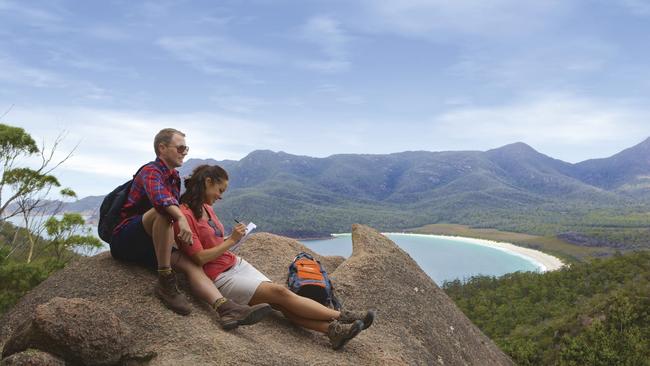
Mount Amos Walking Track, Freycinet National Park, Tasmania
The Wineglass Bay Lookout Track is a must for most walkers in Freycinet National Park, on Tasmania’s east coast, but the nearby 4km Mount Amos Walking Track rewards with equally amazing views. This alternative climb, about three hours return, is off the mainstream radar because it’s fairly steep, rocky and occasionally slippery but it’s a perfect challenge for serious hikers and fit travellers. Mount Amos is one of the three granite mountains collectively known as the Hazards; allow time at the top to relish the 360-degree views of pristine landscapes and Wineglass Bay and pack energy-boosting snacks and plenty of water. Coles Bay is the closest town, about 12km away.
Base camp: Freycinet Lodge; freycinetlodge.com.au.

To join the conversation, please log in. Don't have an account? Register
Join the conversation, you are commenting as Logout